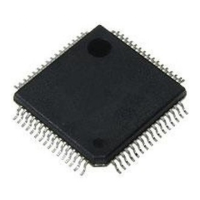Exceptions
ARM DDI 0337G Copyright © 2005-2008 ARM Limited. All rights reserved. 5-11
Unrestricted Access Non-Confidential
5.5 Pre-emption
The following sections describe the behavior of the processor when it takes an
exception:
• Stacking
• Late-arriving on page 5-15
• Tail-chaining on page 5-14.
5.5.1 Stacking
When the processor invokes an exception, it automatically stores the following eight
registers to the SP in the following order:
• Program Counter (PC)
• Processor Status Register (xPSR)
•r0-r3
•r12
• Link Register (LR).
The SP is decremented by eight words by the completion of the stack push. Figure 5-1
shows the contents of the stack after an exception pre-empts the current program flow.
Figure 5-1 Stack contents after pre-emption
Note
• Figure 5-1 shows the order on the stack.
• If STKALIGN is set in the Configuration Control Register then an extra word can
be inserted before the stacking takes place. See Configuration Control Register on
page 8-26.
After returning from the ISR, the processor automatically pops the eight registers from
the stack. Interrupt return is passed as a data field in the LR, so ISR functions can be
normal C/C++ functions, and do not require a veneer.
Old SP
SP
xPSR
PC
LR
r12
r3
r2
r1
r0
<previous>

